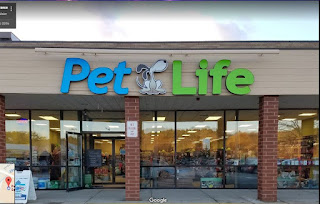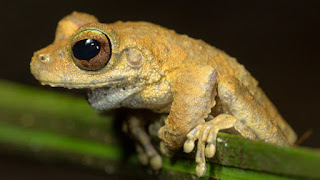Notable dogs and their North Dakota connections - INFORUM

FARGO —To my knowledge, no one has ever published a book or article about notable dogs who spent time in North Dakota and/or were owned by North Dakotans.
I acknowledge that there are or were other dogs that fit into this category that are missing in this article, and if you know of such canines, please let me know.
The first dog of note was Seaman, owned by Meriwether Lewis, who accompanied her master and William Clark on their expedition to cross the newly acquired western portion of this country after the Louisiana Purchase. Seaman was of the Newfoundland breed and purchased by Lewis prior to the expedition in 1803.
Besides being a companion for Lewis, he also provided food for the members of the expedition. Seaman killed and retrieved squirrels, and also retrieved animals that the explorers shot and killed. He once "killed and retrieved an antelope swimming across a river."
At night, Seaman often alerted members of the expedition of intruding animals, such as bears and moose, that wandered into the area.
ADVERTISEMENT
Seaman and the Lewis and Clark expedition arrived in what is now North Dakota on Oct. 14, 1804, and after spending the winter here, left on April 27, 1805.
On their way back to St. Louis, the expedition traveled through the state for 17 days in August 1806. There are at least 18 statues of Seaman, sometimes with Lewis in 14 states. One of those statues is at Fort Mandan where Seaman appears to be looking over the Missouri River.
There are at least 16 children's books that focus on Seaman, and three of them were either written by or co-authored with Everett Albers, the first director of the North Dakota Humanities Council.
Harriet Beckert owned a small ranch near Killdeer in Dunn County. To help her on the ranch,and to serve as a companion, she purchased a young police dog that she named Arno. As Beckert began teaching Arno tricks, she became amazed at how quickly he learned to do many different things.
Beckert became convinced that Arno had the potential to be in movies, so she took him to Hollywood. He was cast as "Arno the Wonder Dog" in the 1927 Western motion picture "The Bandit Chaser," and then became a regular in the Mickey McGuire short films.
Mickey was played by Joe Yule Jr., who later took the name Mickey Rooney. Between 1927 and 1934, over 70 Mickey McGuire films were made, and it is not known how many of those films Arno appeared in.
On Aug. 16, 1956, before the start of a baseball game between the Bismarck Barons and the Dickinson Packers, a dog named London entertained the spectators.
"London bowed to the crowd, brought a bat and a broom to the pitcher, ran the bases, brought a ball bag from the mound, told how old he is (five), imitated a kangaroo, closed a door, turned out a light, played dead, untied a boy, and did a little typewriting."
ADVERTISEMENT
London was owned and trained by Chuck Eisenmann, a pitcher for the Barons, and he was such a big hit that Eisenmann decided to retire from baseball and concentrate on promoting his dog in the entertainment industry.
London, born in 1951, was a Tamaskan, a cross between a German Shepherd and a Siberian husky. Eisenmann taught him "to count, spell, and increased his understanding of over 5,000 words." One writer described London as "the smartest dog that ever lived."
London was featured in an article in Life magazine and was then brought to Hollywood to star in the movie "The Littlest Hobo." In the film, he "hops on freight trains and travels to places where people or animals need his assistance." In 1960, London starred in the movie "My Dog, Buddy," and in 1963, he was the star of the television series "The Littlest Hobo," televised on CTV, Canada's most popular network. The series lasted three years.
Besides his movie and television success, London was also the subject of a book titled "London: The Dog Who Made the Team." It was written in 1963 by David Malcolmson and centered on London's life as a ball-handler and mascot while Eisenmann played minor league baseball.
Although John Steinbeck's 10-year-old poodle, Charley, spent only five days in North Dakota in 1960, the trip became immortalized with the publication of Steinbeck's bestseller,
"Travels with Charley."
Steinbeck knew that his health was fading and wanted to make one last trip, visiting places he wanted to see before he died. Two of the places in North Dakota were Fargo and the Badlands.
Often, Steinbeck would get out of his pickup with Charley, and under the shade of a tree, he would tell Charley his thoughts about what he had just observed. Charley was his traveling companion as the two journeyed across the state from east to west.
From 2009 to early in 2013, one of the most frequent visitors to the U.S. Congress was a dog named Dakota. He was a bichon frise, owned by U.S. Sen. Kent Conrad from North Dakota. Conrad and his wife, Lucy, adopted Dakota in the spring of 2009 from a rescue shelter in Maryland. and the dog and the senator became so attached that Conrad ended up taking Dakota with him to Congress.
ADVERTISEMENT
"Dakota was constantly by Conrad's side in Congress, leading some to affectionately refer to him as the 101st senator." He gained notoriety when "he starred in NBC's 'Inside Congress' documentary."
In late 21011, Dakota was diagnosed with lymphoma and the national press often printed updates on his progress. After a four-month battle, Dakota's cancer went into remission, and he again accompanied Conrad to Congress. But cancer returned and in February 2013, Dakota died.
I want to conclude this article by including Rambo, me and my wife, Jan's, dog from 1995 to 2011. I was not a big dog lover for much of my life, because as a young child, perhaps 3 years old, our farm dog, Laddie, growled at me and showed his teeth when I approached him. I don't know why he did this, but I may have done something he didn't like, and I have no idea what that may have been.
I remember having reoccurring nightmares of vicious animals showing their teeth, and I had no desire to own a dog, even though I frequently ended up petting other people's dogs.
In 1995, Jan really wanted us to get a dog, and I agreed. Rambo was primarily Jan's protector and companion until I started writing my newspaper articles. He would follow me down to my library/office and lay down by my feet as I researched and wrote my articles, which seemed to bring him much contentment.
Rambo allowed me to take short breaks to watch television or to talk to Jan, but if I was away for more than 15 minutes, he would let me know with a few loud barks that I needed to get back to work. It was amazing how much more efficient I was when Rambo was on the job.
After Rambo died, the fifth volume of our "Did You Know That" series of books was dedicated to him because we loved him so much and he filled our lives with happiness.
"Did You Know That" is written by Curt Eriksmoen and edited by Jan Eriksmoen of Fargo. Send your comments, corrections, or suggestions for columns to the Eriksmoens at cjeriksmoen@gmail.com.



Comments
Post a Comment